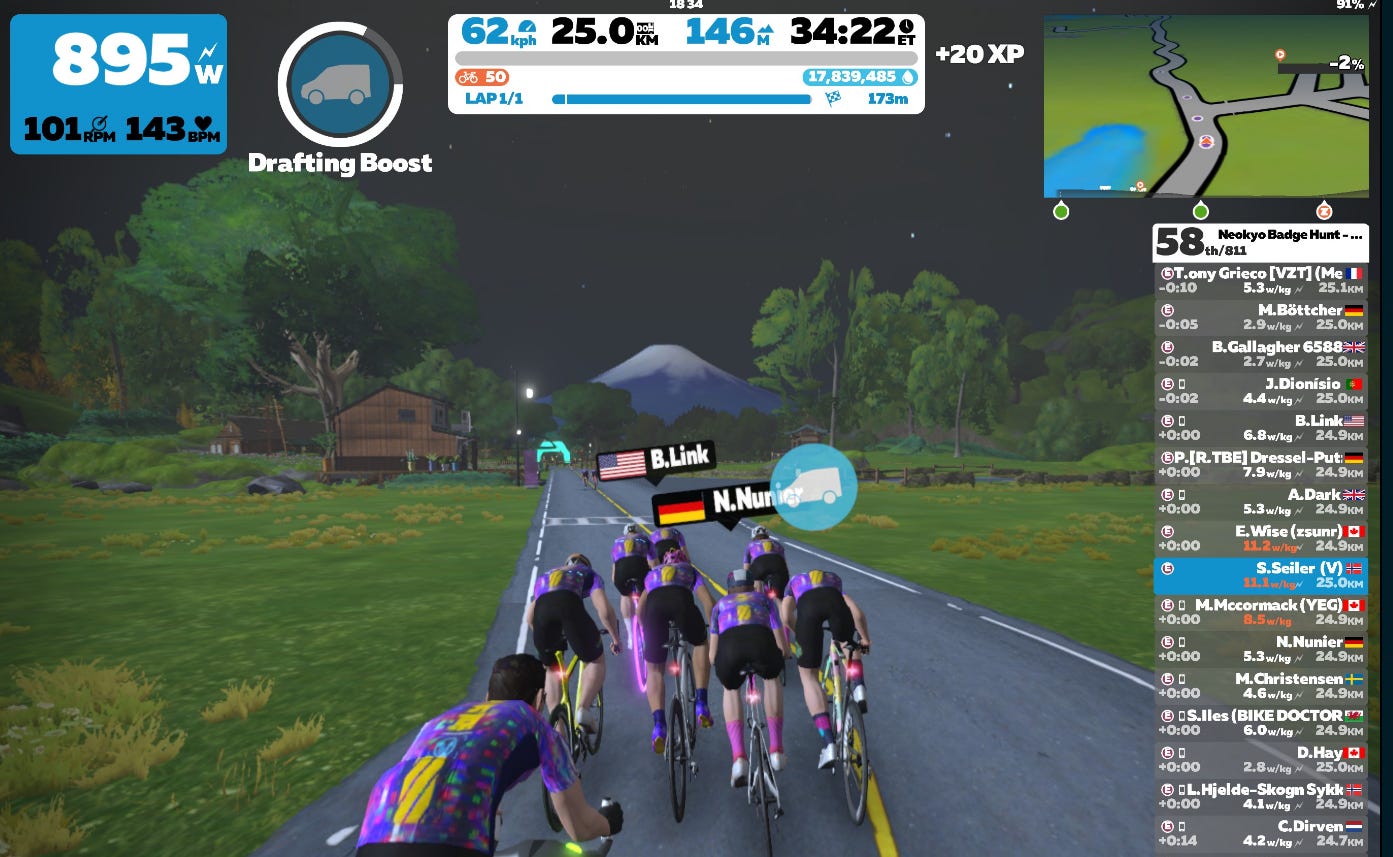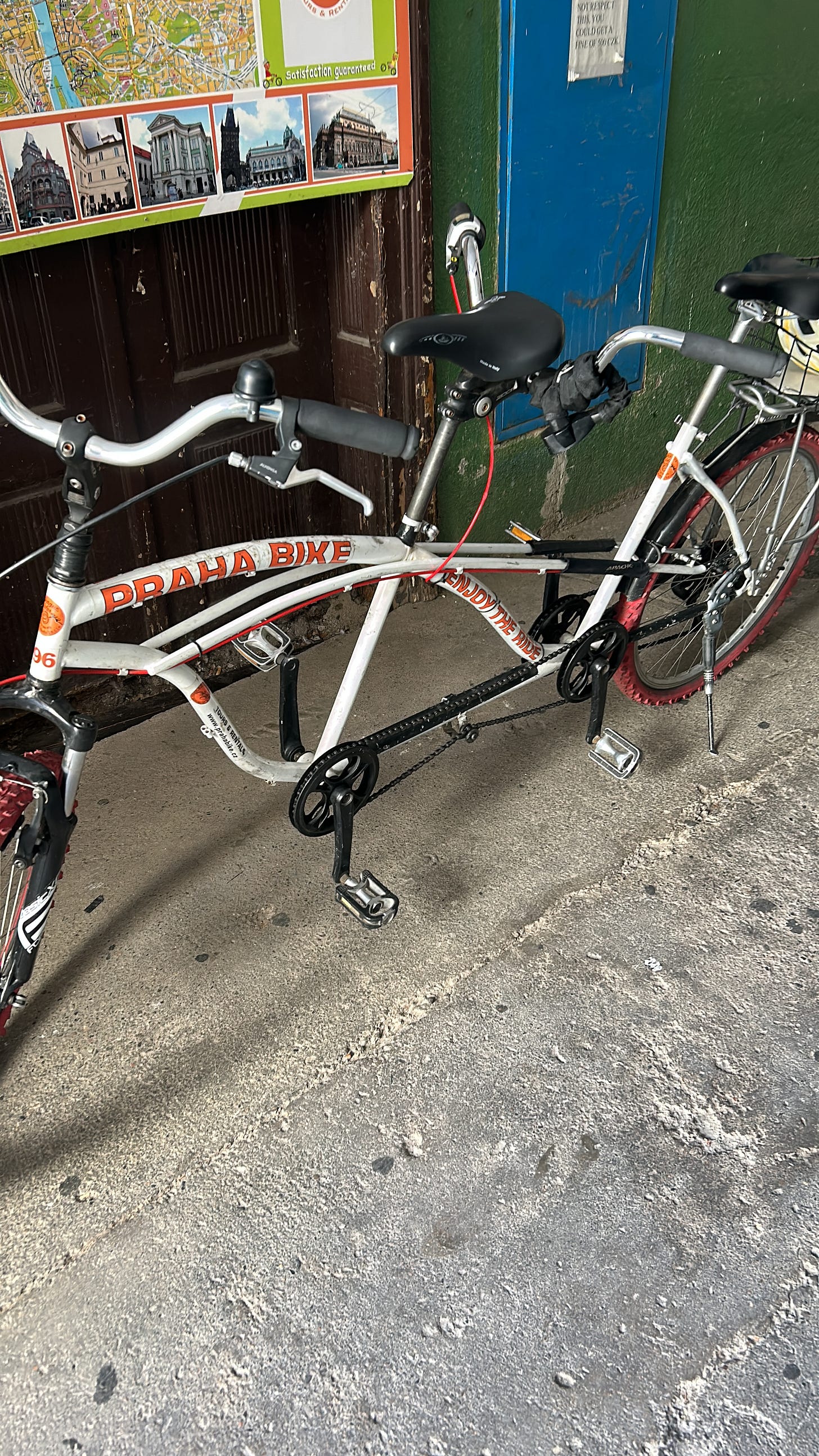
A couple of years ago I sat through a presentation on virtual reality, featuring a slide with logos and images from a range of VR applications — including Zwift. I thought, “So there is a form of VR I’m interested in after all.” (Mostly I prefer my reality…real.)
Since then the number of virtual cycling platforms has proliferated. There’s Rouvy, Kinomap, MyWhoosh (OK, fellow European marketers, what’s a brand name that will appeal to American cyclists? ), and several others. So I thought I’d test several of these and write up a comparison, kind of a one-off mini DC Rainmaker post.
A seasoned Zwift rider, taking to it when the weather turns damp and the days turn short, I downloaded and sampled a few of the alternatives. Within minutes on each I drew a couple of conclusions:
But for a few marginal features, these platforms are mostly the same, and
I'm thus not going to spend time writing that review.
The interface on one platform is more realistic than the others; another mimics a more lifelike “draft” feel; others might offer music, simpler rider-to-rider communication, or avatar personalization.
Whatever. Using any of them results in the same puddle of sweat, the same very sore rear end, and typically a similarly solid workout.
But Zwift, the orginal, boasts numbers: Thousands of riders share your “road”; a race might pit you against hundreds of rivals. And therein lies its appeal to me — classic network effects: The more users, the more appealing. When I ride Zwift, I pass time by counting the riders I pass — and deduct two if someone passes me. I look at the clock when I reach 100. More riders using the app yields more passing, which yields more tiny little dopamine releases.
For me. Not for others, I know. Not for my wife Karen, for example.
Because we all come to cycling with different motivations, for different purposes. Some of us wish to compete; others want to be outside, to feel that proverbial wind in your hair (through your helmet vents, of course); for others, cycling is their (hopefully) low-impact route to fitness.
Saving money on gas; saving the atmosphere; fascination with the simply elegant technology of a bicycle: Most of us subscribe to nearly every item on this list of motivations, but the order of our lists varies widely. Competition is towards the top of my list, and likely at the very bottom of Karen’s. That’s just not how she’s wired.
This was the real insight that I (re)drew from testing those platforms: That while we come to cycling with a vast and varied range of motivations, we all end up in the same spot: Seated on a saddle, pedaling away. We make compromises to ride together: Test yourself on terrain that sits just outside your comfort zone — or chill on something easier than you might prefer. Ride your mountain bike on the road; try an e-bike; push past your aerobic limits; take it easy on a day when you’d planned a lung-buster.
Karen and I don’t ride together that often, but cycling is common, shared, mutually beloved ground. We’ll ride side-by-side on a farm road, or I’ll lead the way on a trail. We chat, we remark about trail conditions, we wave to other riders. We have our respective motivations, but we both return home with endorphins coursing, and knowing each other just a bit better than when we rolled out of our garage. (Which is saying a lot after 29 years of marriage.)
So…scratch the virtual platform comparison. Instead, consider this post an exhortation: Ride a bike. Ride it as safely as you can. Ride it with others. Make cycling your common, shared, mutually beloved stretch of ground.

.



